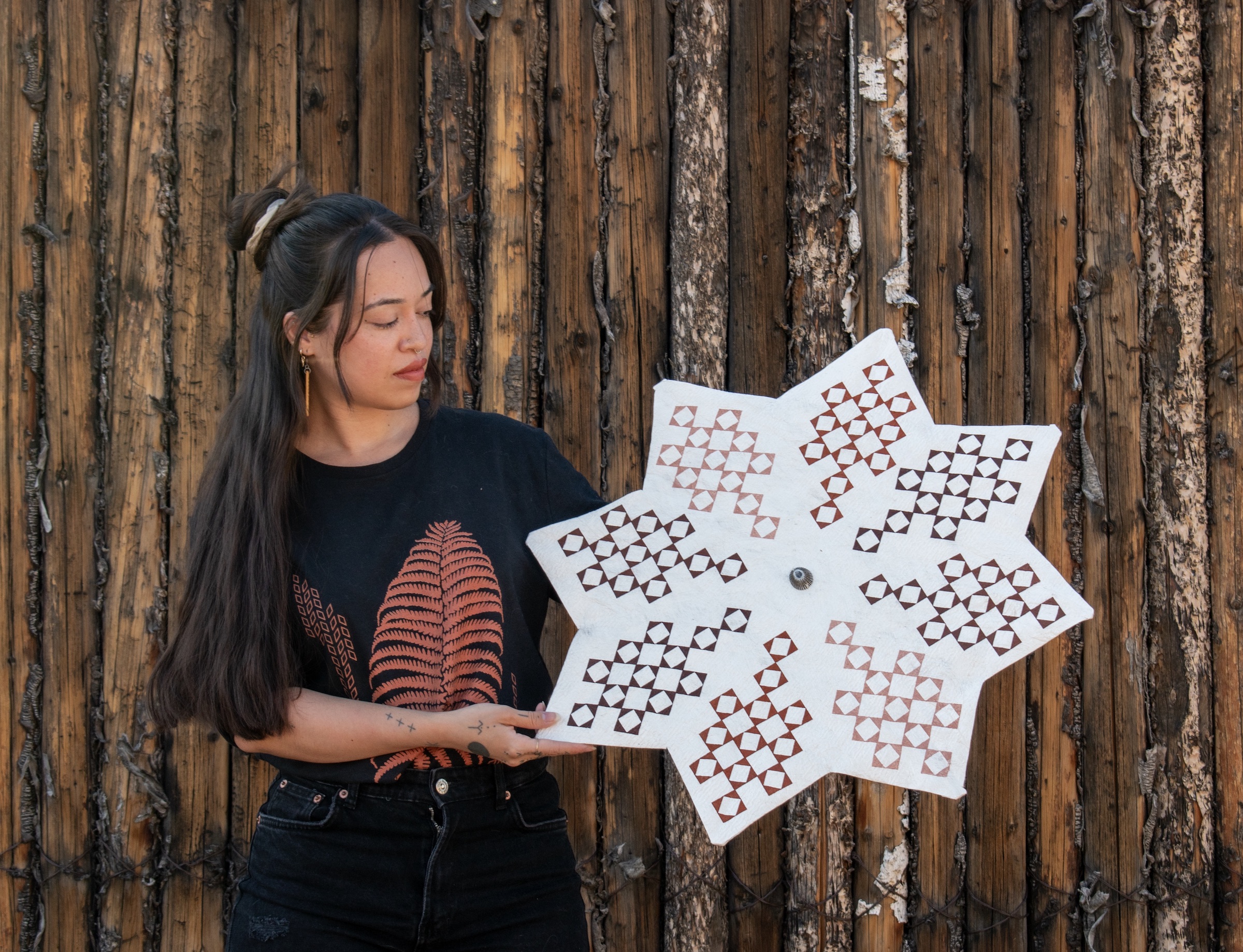Lehuauakea, a Kanaka Maoli artist and practitioner of kapa, or Native Hawaiian bark clothmaking, felt called to reclaim the practice — which was nearly wiped out by the 1900s as the United States illegally annexed the territory — when they moved away from home to Oregon during high school.
Years later, Lehuauakea splits their time between Santa Fe, on “the continent,” and the Island of Hawaiʻi, where they grew up. Lehuauakea gathers, soaks, and beats tree bark, usually from the wauke or paper mulberry tree, to create kapa, which they dye with natural pigments to form large-scale installations, textiles, and experimental mixed-media works.
Last month, Lehuauakea became the second recipient of the Walker Youngbird Foundation’s twice-annual $15,000 grant for emerging Native American artists, which will also prepare them for a solo exhibition at the New York City gallery Nunu Fine Art in 2026.
The foundation was launched last November by Reid Walker, a communications professional and member of the Mandan, Hidatsa, and Arikara Nations of North Dakota. Muscogee-Creek painter George Alexander was the grant’s inaugural recipient.
Lehuauakea is among the few kapa practitioners under the age of 30 working in the art form today, according to the foundation.
Walker said in a statement in March that Lehuauakea’s integration of ancestral tradition, environmental stewardship, and themes of queer Indigenous identity serves as a “compelling example of how Native artists are not only preserving cultural traditions but actively evolving them.”

In addition to revitalizing the traditional practice of kapa, Lehuauakea told Hyperallergic that their work incorporates textiles commemorating their Japanese heritage, which dates back to a wave of immigrants who came to Hawaiʻi as sugar and pineapple plantation laborers.
Lehuauakea said their current work addresses what “contemporary mixed Indigenous heritage looks like for someone with a similar experience to [theirs] in 2025.”

In one installation, “Still Finding My Way Back Home” (2025), Lehuauakea stitched bags of Calrose Rice, which they said they grew up eating, with kapa, Japanese silk, kimono fabrics, and cotton in a quilt-like work.
“So many of us come from plantation histories,” Lehuauakea said. “I wanted to celebrate those histories, which can often be complicated and filled with assimilation, erasure, and family secrets.”
Lehuauakea said that the $15,000 grant will specifically fund studio rent and materials in preparation for their upcoming exhibition in New York, which will be their first solo show on the East Coast.
“I see getting this opportunity and support as bigger than myself,” Lehuauakea said, adding that they perceive that many contemporary Native arts organizations don’t often center Native Hawaiian artists.
“I hope I can do right by this and represent my community well,” Lehuauakea said. “And hopefully, I can encourage others to open future doors for other Native Hawaiians to be included in the conversation, too.”


